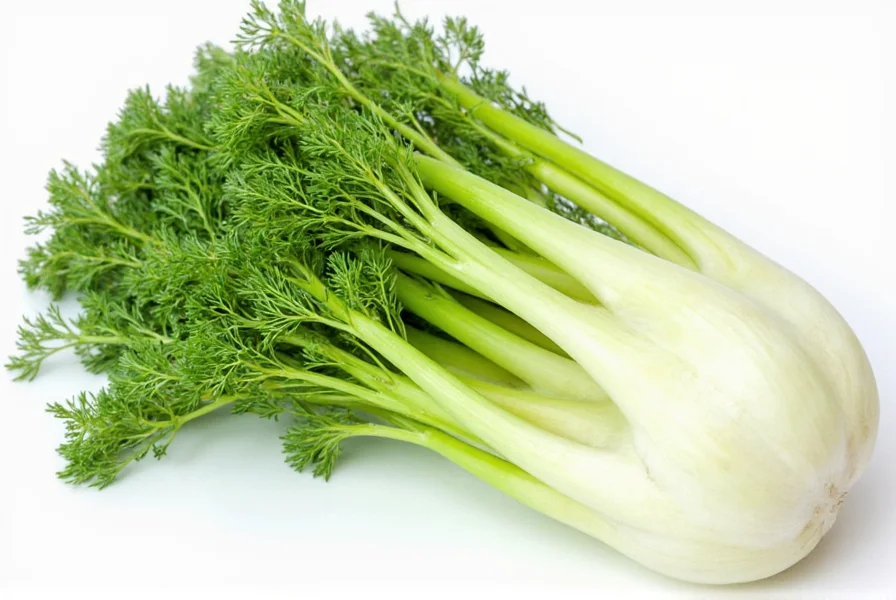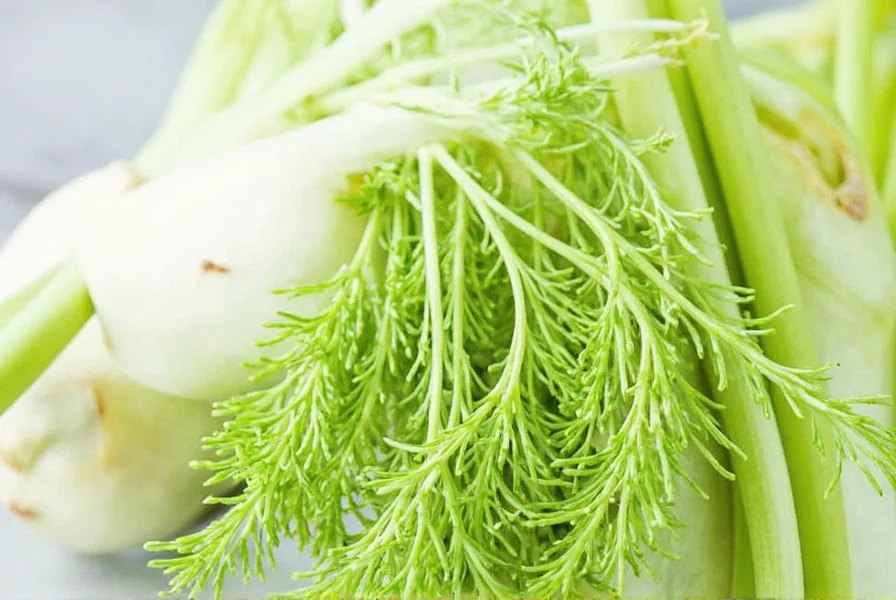Fennel's unique taste experience makes it a prized ingredient across global cuisines, from Mediterranean to Indian cooking. Understanding its complex flavor profile helps home cooks and professional chefs alike harness its full culinary potential. Unlike artificial licorice flavors that can overwhelm, fennel provides a balanced aromatic experience that enhances rather than dominates dishes.
Breaking Down Fennel's Flavor Components
The primary compound responsible for fennel's characteristic taste is anethole, the same essential oil found in anise and star anise. However, fennel contains this compound in lower concentrations, creating a more subtle flavor experience. When you bite into raw fennel bulb, you'll first notice a crisp, juicy texture similar to celery, followed by a refreshing sweetness with distinct anise undertones. The flavor profile evolves when cooked—roasting brings out natural sugars while sautéing creates complex caramelized notes.
Fennel seeds, harvested from the mature plant, offer a more intense flavor experience. These tiny seeds contain higher concentrations of essential oils, delivering a warm, slightly peppery anise flavor with citrus and floral hints. Many chefs describe fennel seeds as having greater complexity than anise seeds, with additional earthy and herbal notes that develop when toasted.
Comparing Fennel Parts: Bulb, Seeds, and Fronds
| Fennel Component | Flavor Profile | Best Culinary Uses |
|---|---|---|
| Bulb | Crisp, mildly sweet with subtle anise notes | Raw in salads, roasted, grilled, braised |
| Seeds | Concentrated anise with warm, earthy undertones | Spice blends, sausages, breads, curries |
| Fronds | Delicate anise flavor, similar to dill | Garnish, herb blends, pesto, dressings |
Understanding these flavor differences is crucial for how to use fennel in cooking effectively. The bulb's mild sweetness makes it versatile in both raw and cooked applications, while the seeds' intensity means they work best when used sparingly or toasted to mellow their flavor. Many home cooks wonder is fennel supposed to taste like licorice—while related, fennel's flavor is more complex and less one-dimensional than commercial licorice candy.
How Cooking Methods Transform Fennel's Flavor
Raw fennel bulb delivers the purest expression of its natural flavor—crisp, refreshing, with pronounced but not overwhelming anise notes. This makes it perfect for fennel salad flavor combinations with citrus, apples, or bitter greens. When subjected to heat, fennel undergoes remarkable transformations:
- Roasting caramelizes natural sugars, creating sweet, nutty notes while mellowing the anise flavor
- Sautéing develops deeper, more complex flavors while retaining some crispness
- Braising yields tender results with integrated flavors that complement meats and stocks
- Grilling adds smoky dimensions that balance the inherent sweetness
Professional chefs often employ the technique of toasting fennel seeds before grinding to unlock their full flavor potential. This simple step releases essential oils, creating a more aromatic and complex spice that elevates everything from Italian sausage to Indian curries.
Global Culinary Applications of Fennel Flavor
Fennel's flavor profile has been embraced by diverse culinary traditions, each leveraging its unique characteristics:
In Mediterranean cuisine, particularly Italian cooking, fennel bulb appears in salads, roasted vegetable medleys, and alongside fish. The classic Italian combination of fennel, orange, and olive oil showcases how the bulb's crisp texture and subtle sweetness complement bright citrus notes. French cuisine features fennel in the aromatic base known as mirepoix, where it replaces celery for a more complex flavor foundation.
Indian cooking utilizes fennel seeds extensively in spice blends like panch phoron and garam masala. The seeds' warm anise flavor complements other spices without overwhelming them, creating balanced flavor profiles in curries and rice dishes. Many Indian households serve roasted fennel seeds after meals as a digestive aid and breath freshener—a practice that highlights fennel's functional benefits alongside its flavor.
When exploring fennel flavor pairings, consider these successful combinations:
- Fennel + Citrus (orange, lemon, grapefruit)
- Fennel + Seafood (especially salmon and white fish)
- Fennel + Apples and Pears
- Fennel + Tomatoes and Olives
- Fennel + Sausage and Pork
Addressing Common Flavor Misconceptions
Many people approach fennel with apprehension, fearing an overwhelming licorice flavor. This fennel taste misconception stems from confusing fennel with stronger anise derivatives. While related botanically, fennel's flavor is significantly more nuanced. The bulb's water content (about 90%) dilutes the anise compounds, creating a much milder experience than pure anise extract.
Another common question concerns why does fennel taste like anise. The answer lies in shared chemical compounds—both contain anethole, but in different concentrations and alongside other flavor compounds that create distinct profiles. Fennel contains additional terpenes that provide citrus and herbal notes absent in pure anise.

Scientific Perspective on Fennel's Flavor Chemistry
From a food science perspective, fennel's flavor complexity comes from its diverse chemical composition. Beyond anethole (which constitutes about 50-60% of fennel's essential oil), fennel contains:
- Fenchone (providing minty, camphoraceous notes)
- Limonene (citrus undertones)
- Estragole (subtle herbal notes)
- Alpha-pinene (woody, pine-like hints)
This chemical diversity explains why fennel's flavor is more complex than single-note anise products. The specific ratios of these compounds vary based on growing conditions, harvest time, and plant part, creating subtle flavor variations that skilled chefs learn to recognize and utilize.
Practical Tips for Working with Fennel Flavor
When incorporating fennel into your cooking, consider these evidence-based recommendations:
- For raw applications, slice the bulb thinly against the grain to minimize fibrous texture
- Reserve the feathery fronds as a delicate herb—they have a milder flavor than dill
- Toast fennel seeds in a dry pan for 1-2 minutes to enhance their aromatic complexity
- When substituting fennel for celery, use about 25% less due to its stronger flavor
- Balance fennel's natural sweetness with acidic components like lemon juice or vinegar











 浙公网安备
33010002000092号
浙公网安备
33010002000092号 浙B2-20120091-4
浙B2-20120091-4